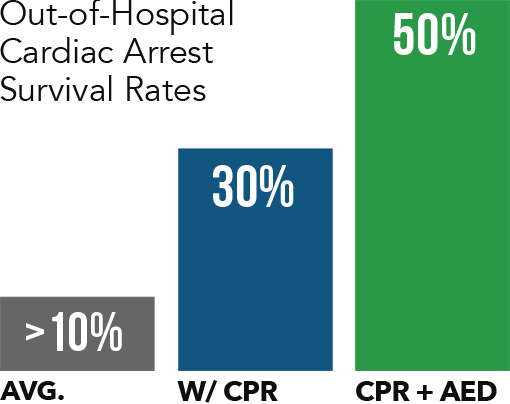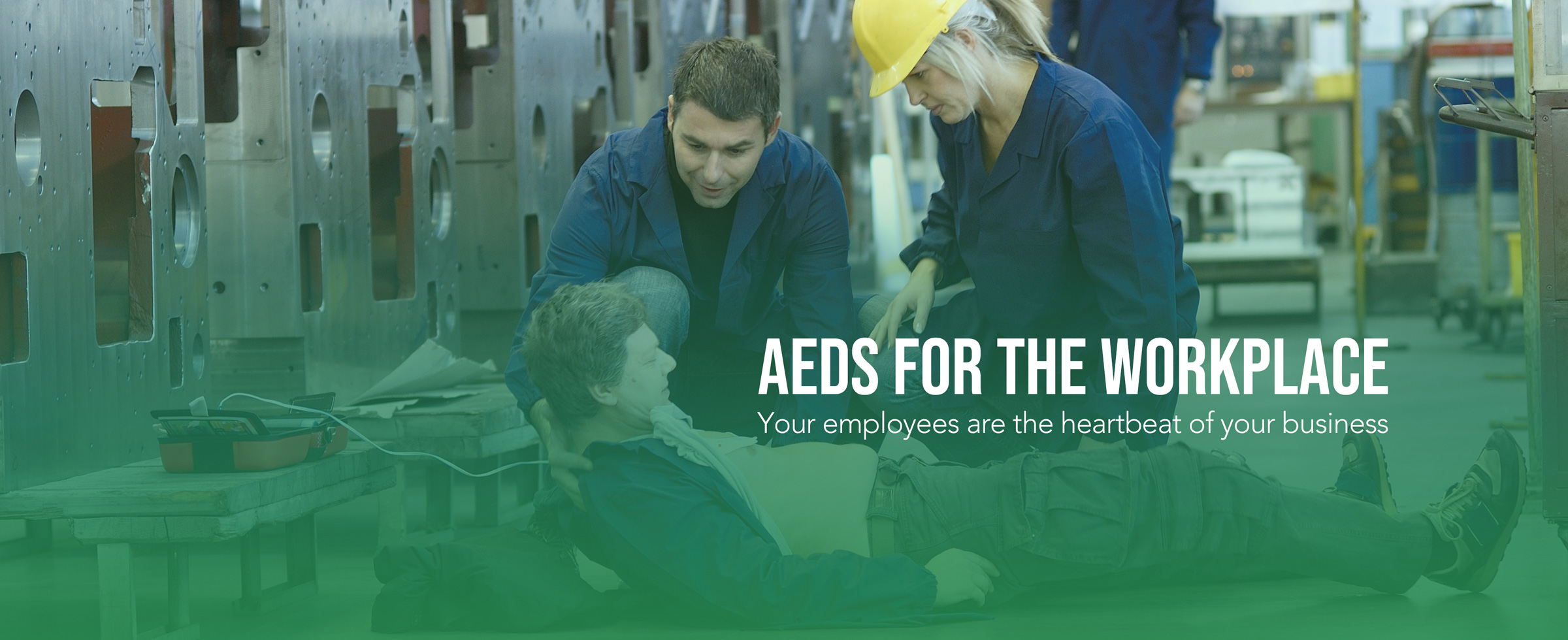
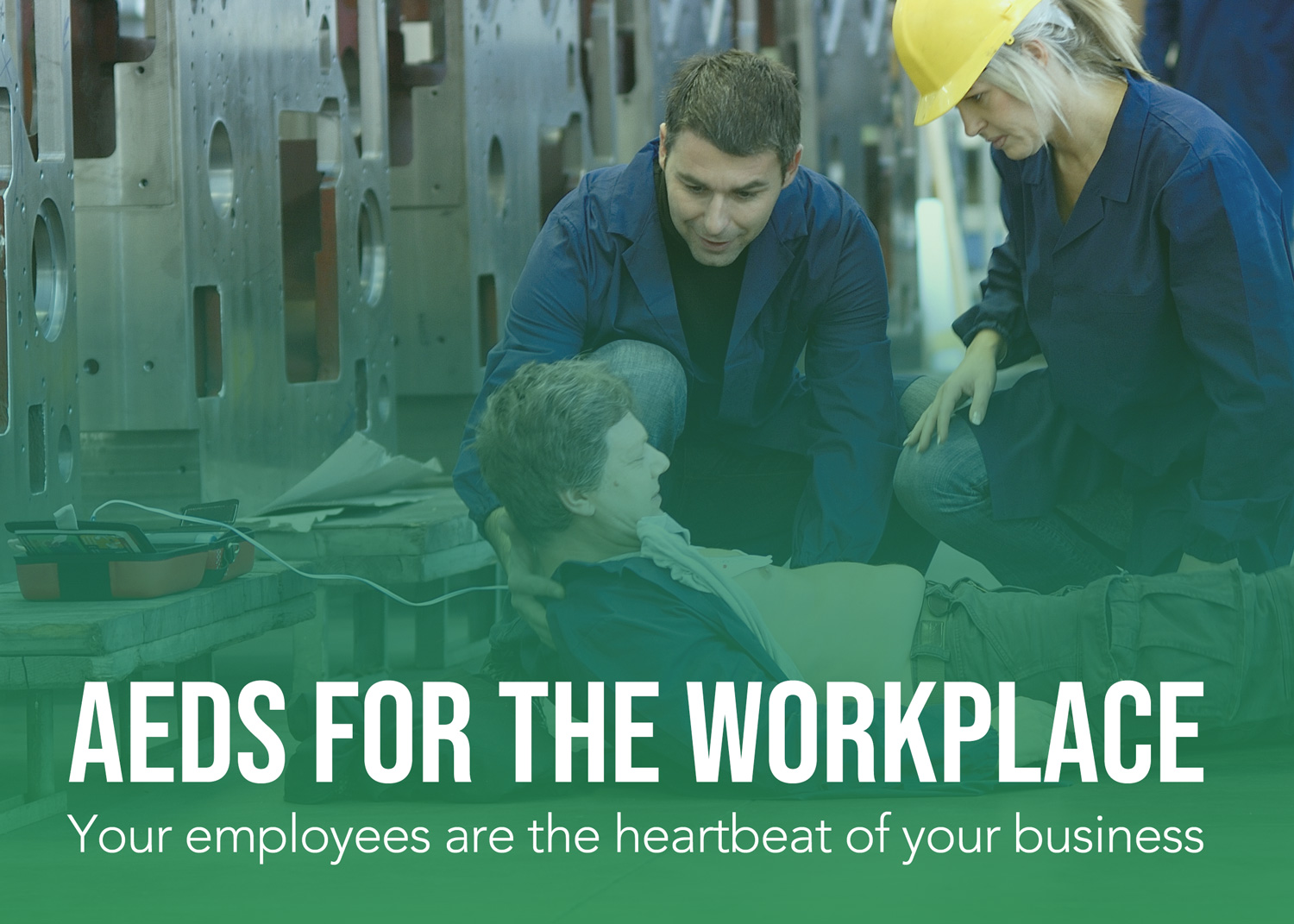
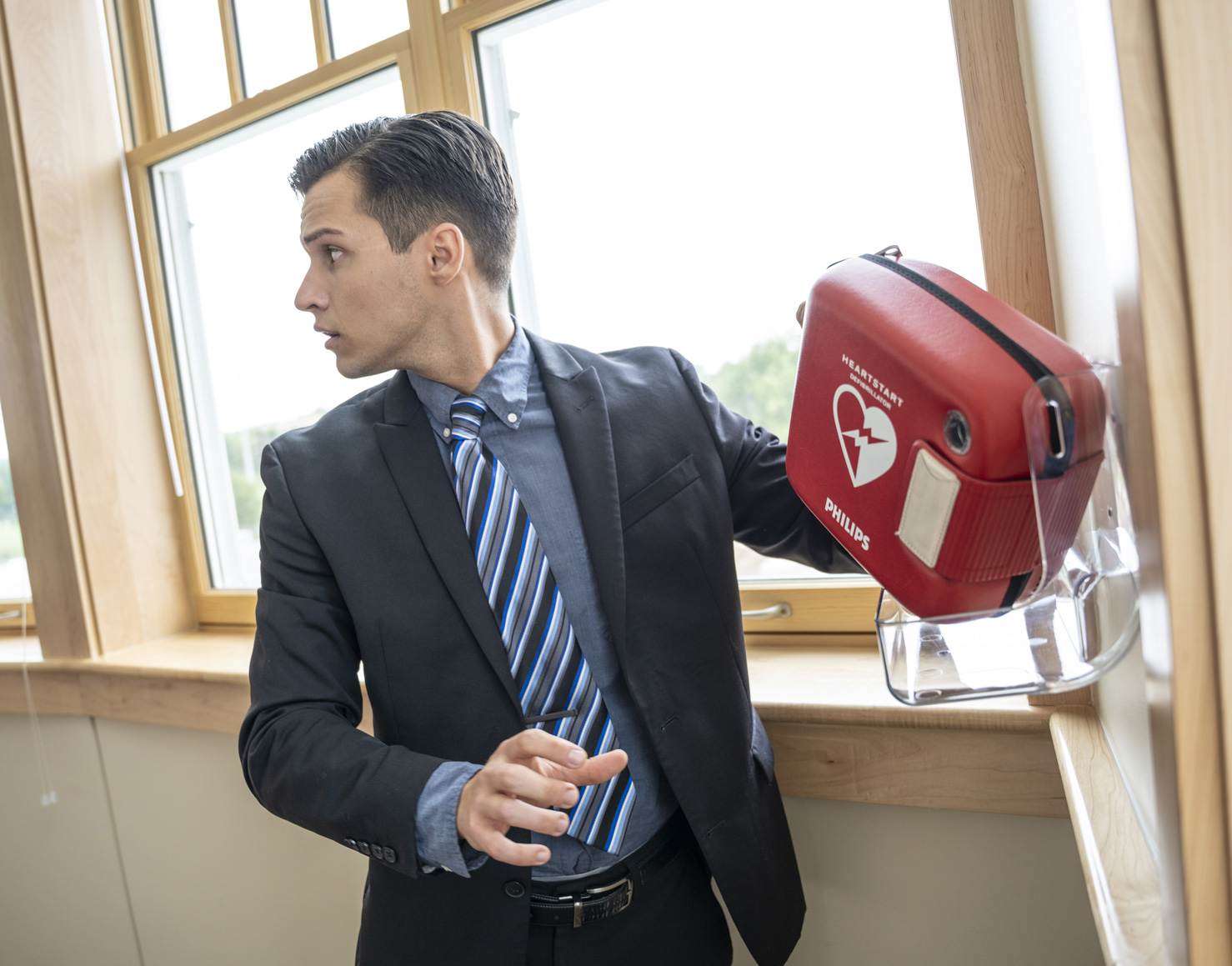
Prioritizing the safety and wellbeing of your employees is good business
Sudden Cardiac Arrest (SCA) is one of the leading causes of death in the U.S., taking the lives of over 360,000 people annually. Sudden Cardiac Arrest can strike anyone of any age, anywhere, at any time, usually without warning. Over ten thousand Americans die in the workforce from sudden cardiac arrest every year. Without immediate emergency response, victims only have minutes to live. For every minute that goes by without a defibrillating shock from an AED, or Automated External Defibrillator, the victim’s chance of survival drops by 10%. Unfortunately, the average EMS response time is around seven minutes, meaning most of the time, necessary life-saving equipment and help does not arrive in time. As a result, up to 95% of out-of-hospital SCA victims die because of a delay in emergency response.
A Simple Life-Saving Solution
Sudden Cardiac Arrest is caused by an irregular rhythm of electrical activity in the heart, and can only be treated with an electric shock called defibrillation from an AED. Recent spotlight of sudden cardiac arrest has led to legislative support from federal and state governments, recommending or even require life-saving devices in many public places such as parks, schools, offices, factories, workplaces, and many businesses. AEDs are designed to be an easy-to-use, intuitive, and cost-effective life-saving solution.
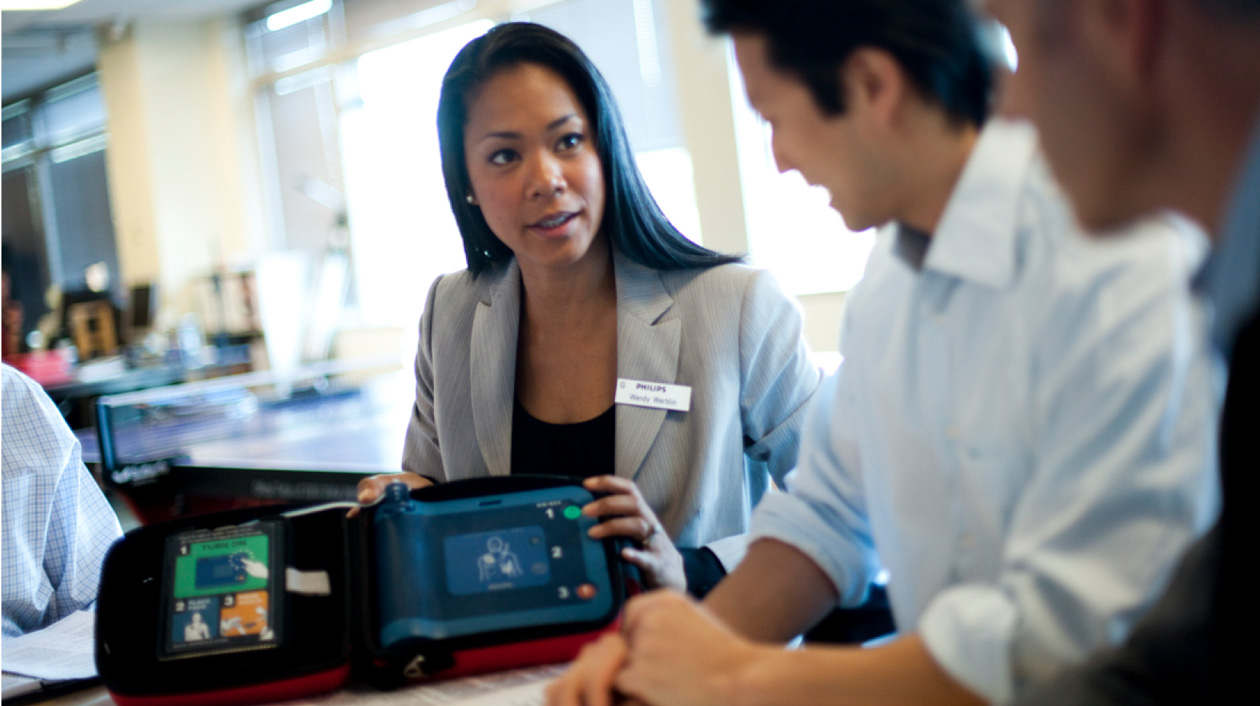

Preparing for AEDs in the Workplace
Types of AEDs:
AEDs come in all shapes and sizes but all are designed to be used by a professional or an untrained bystander to deliver a life-saving shock in a critical situation. However, AEDs have certain features that make them ideal for specific settings. For workplaces such as an office, factory, store, or other business facility, we recommend the FRx AED from Philips. Philips is a trusted, reputable brand with a large infrastructure of support and a history of dependable devices. The FRx AED Business Package has a low long-term cost of ownership and is one of the easiest to maintain, designed with large or small businesses in mind:
-
New AED,Rescue-Ready out of the box
-
Simple interface. Designed with ease-of-use in mind for anyone to save a life
-
A timed metronomeguides rescuers on CPRtempo
-
4-Year batterylife (industry standard: 2 years)
-
Eight-Year manufacturer warranty(longest in the industry)
-
Daily, weekly, and monthly self-tests foreasy maintenance
-
Rugged, durable unitwith a high IP rating and wide range of storage conditions
-
Wall-mountedcabinetincluded
-
AEDwall signincluded
-
First Aid Kitincluded
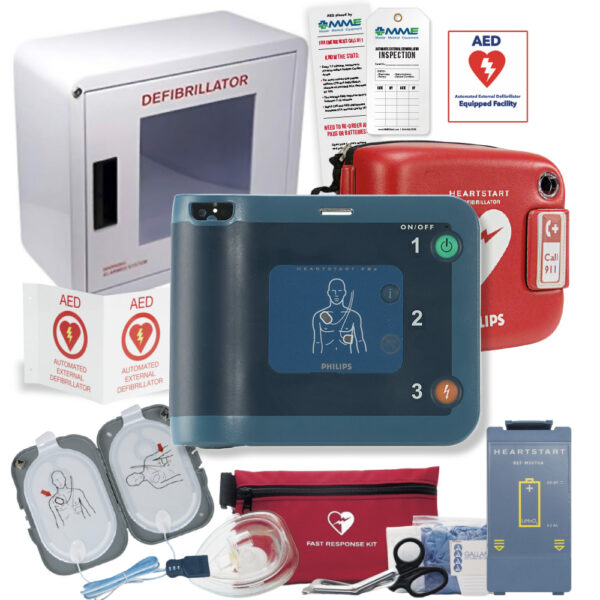
Emergency Response Plan
An Emergency Response Plan lays out the exact steps your staff should take if an employee, worker, or customer has a sudden cardiac arrest on your premises. The ERP should include the specific instance of sudden cardiac arrest, noting the steps of emergency response as well as the locations of AEDs in your facility. Your company’s Emergency Response plan should be reviewed annually and made available to all staff, and include:
- The creation of a Cardiac Emergency Response Team
- The steps to activate the CERT team, notifying the local EMS, and handoff once paramedics arrive
- AED placement(s) within the facility and AED maintenance schedule
- Budgetary consideration for replacing old units, adding units to account for expansion/quicker response, annual AED maintenance, and replacing expired pads/batteries
- Cardiac arrest response drills
Maintenance Plan:
To ensure your Philips FRx AED is working and ready to save a life, the AED must be stored and maintained properly. The FRx performs daily, weekly, and monthly self-checks and will signal when something is wrong. However, it’s recommended you check on your AED monthly, or purchase the AED Remote Management System to monitor the status of your AEDs digitally.
- Check the green readiness indicator on the top right of your device
- Listen for chirping or beeping sounds indicating an issue with the device
- Ensure the pads and batteries are within their usable dates, reordering if either is about to expire.
-
It is recommended you send your AEDs for an annual Preventative Maintenance check-up to a biomedical service provider. Trained and certified technicians will clean your device, ensure it passes all tests, and alert you to any needed repairs or issues.

Frequently Asked Questions about AEDs in the Office/Workplace
No specific federal law requires an AED in workplace settings, but all 50 states have enacted laws or regulations for these devices. While these laws vary from state to state, much of the legislation regulates the availability of AEDs in public/government buildings, the conditions of their use, training requirements, etc.
What’s the best AED for my office or facility?
For offices, factories, workplaces, stores, and places of business, we recommend the Philips FRx AED. Our FRx AED Business Package is designed with any size business in mind, and is customized with everything you need to install the AED in your facility today. The price of a new unit is an investment, but the industry leading warranty and battery life means the low cost of ownership pays off almost immediately. Best of all, we’re offering a limited-time $500 off coupon for businesses purchasing the FRx AED! Order today for free shipping, the FRx packages are in-stock with no backorders, and can ship quickly.

When is an AED required in the workplace?
It depends on the state. Many states have adopted laws requiring AEDs to be placed in certain businesses like health clubs, gyms, dentist offices, parks, public spaces, and athletic facilities. Since your employees spend a significant amount of their time on your premises, they should expect the same (if not better) emergency preparedness at work compared to their local park.
How many AEDs should my facility have?
Saving someone from sudden cardiac arrest significantly relies on the amount of time that happens between the cardiac emergency and deployment of the AED. For every minute that passes after an SCA without a defibrillating shock, the survival odds decrease by 10%. Because time is so precious, AEDs should be never be more than three minutes (from emergency scene -> AED retrieval -> returning with AED) away from any given point in your facility.
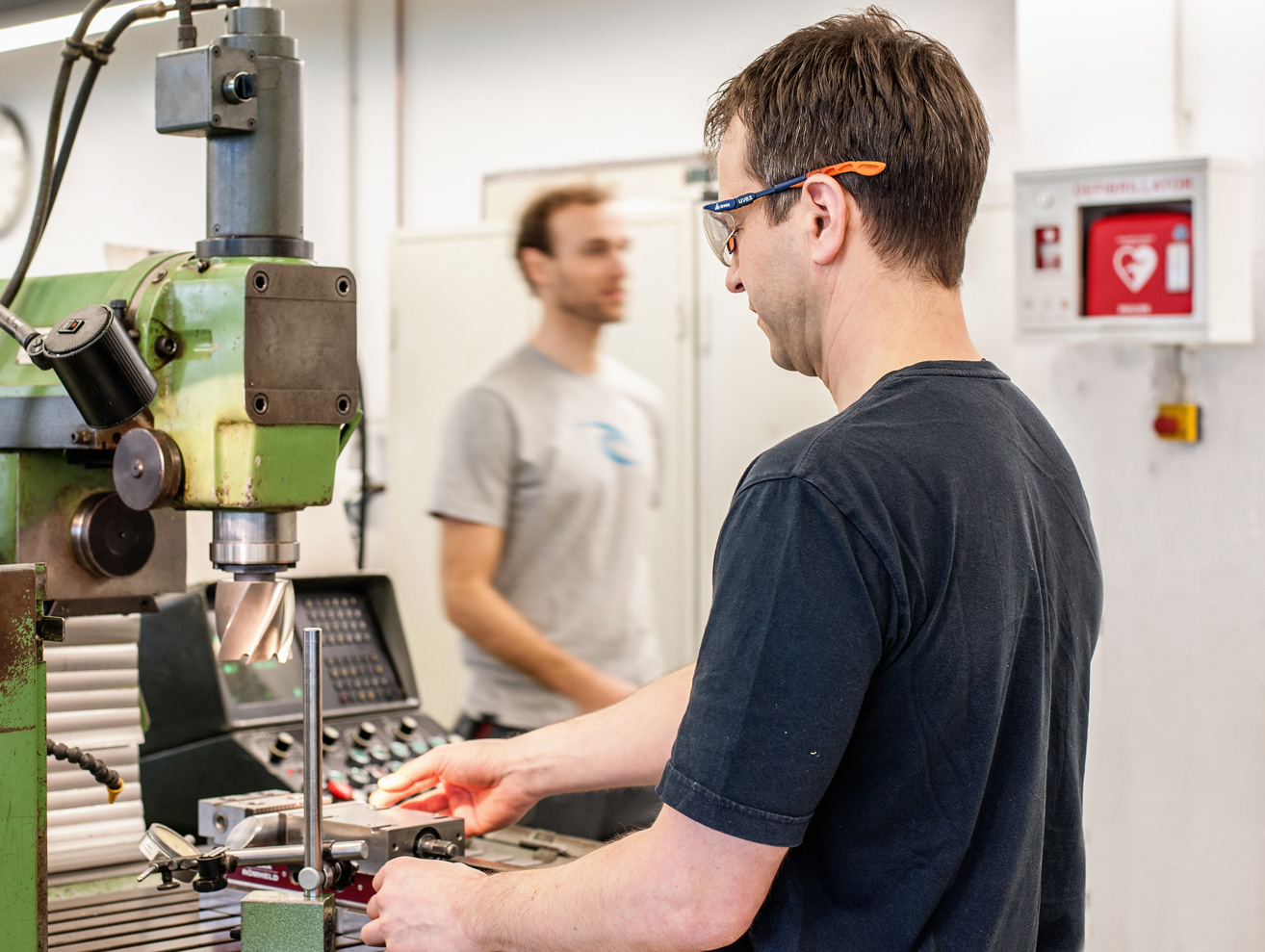
The exact number of AEDs in a workplace depends mainly on the shape and layout of your building, which can affect AED deployment time. In most buildings with large floors, or multiple stories, or many hallways, one AED is just not enough. A good rule of thumb for most offices and buildings is to place an AED on each floor of the workplace, but this won’t work for every facility. A great proof of concept is putting your Cardiac Emergency Response Team to the test. Time how fast it is to retrieve the AED from different locations in your building, and if the time between emergency and deployment is more than three minutes, you may need to invest in more AEDs.

